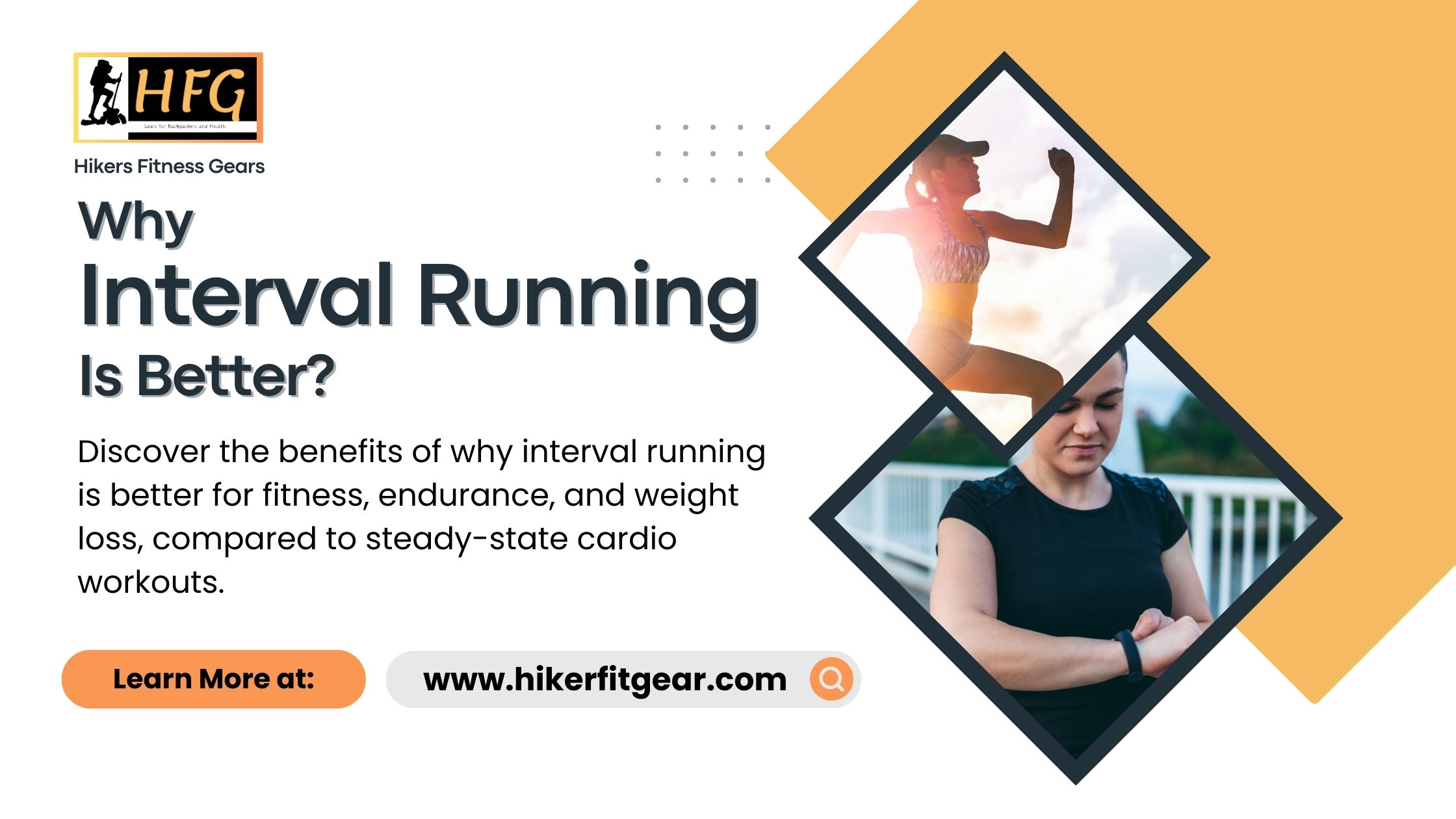Why Interval Running Is Better?
Introduction
Exploring the question of whether Interval Running Is Better leads us a fascinating discussion about optimizing fitness and performance. Interval training, characterized by alternating periods of high-intensity effort and recovery, has gained popularity for its ability to enhance speed, endurance, and overall cardiovascular fitness. Many fitness enthusiasts and athletes swear by the effectiveness of interval running in achieving their fitness goals. In this comprehensive guide, we will delve into the benefits of interval training, explore why Interval Running Is Better for certain fitness outcomes, and provide insights into incorporating intervals into your workout routine.
Table of Contents
What This Post Covers
This post will cover:
- Definition of interval running and its principles.
- Comparison between interval running and steady-state cardio.
- Benefits of interval running for fitness and weight loss.
- Tips for incorporating interval running into your workout routine.

Why Is Interval Running Is Better?
Definition and Principles
Interval Running Is Better involves short bursts of high-intensity effort followed by periods of recovery or lower intensity. This method challenges both aerobic and anaerobic systems, leading to improved cardiovascular fitness, endurance, and calorie burning. The key principles of interval running include intensity, duration, and recovery periods.
Working of Interval Running
Embracing interval running unlocks a plethora of advantages that elevate it above conventional cardio routines. Its inherent efficiency, characterized by intense bursts followed by rest, expedites fitness gains and time optimization. Notably, the calorie-torching prowess of interval running, coupled with its cardiovascular enhancements and versatility, underscores its appeal to fitness enthusiasts across varying levels of expertise. From accelerated fat loss and improved endurance to heightened metabolic rates, the virtues of interval running are multifaceted and undeniable, heralding a new era of fitness optimization.
Comparison with Steady-State Cardio
Efficiency
Interval running is more time-efficient compared to steady-state cardio. Short, intense bursts of activity followed by recovery periods can produce similar or even superior fitness benefits in less time.
Calorie Burning
Interval Running Is Better leads to a higher calorie burn both during and after the workout, known as the afterburn effect or excess post-exercise oxygen consumption (EPOC). This can contribute to weight loss and improved metabolic rate.
Cardiovascular Fitness
Interval running improves cardiovascular fitness by challenging the heart and lungs with varying intensities. This can lead to better endurance and overall heart health.
Benefits of Interval Running
1. Improved Fitness Levels
Interval running challenges the body to adapt to different intensities, leading to improved cardiovascular fitness, speed, and endurance.
2. Time Efficiency
Short, intense workouts can produce significant fitness gains in less time compared to longer steady-state cardio sessions.
3. Increased Calorie Burn
Interval Running Is Better can lead to a higher calorie burn during and after the workout, contributing to weight loss and improved metabolic rate.
4. Variety and Challenge
The variety of intervals keeps workouts interesting and challenging, preventing boredom and plateauing.
5. Flexibility
Interval running can be adapted to various fitness levels and goals, making it suitable for beginners to advanced athletes.
Tips for Incorporating Interval Running
1. Start Slowly
Begin with shorter intervals and gradually increase intensity and duration as your fitness improves.
2. Mix Intervals
Experiment with different interval lengths and intensities to keep workouts challenging and engaging.
3. Warm Up and Cool Down
Always start with a warm-up and end with a cool-down to prevent injury and aid recovery.
4. Listen to Your Body
Pay attention to your body’s signals and adjust intensity or duration as needed to avoid overtraining.
5. Stay Consistent
Consistency is key to seeing results with interval running. Aim for regular workouts to maximize benefits.

Conclusion
In conclusion, why interval running is better stems from its efficiency, effectiveness, and versatility in improving fitness levels and achieving weight loss goals. By incorporating Interval Running Is Better into your workout routine and following the principles outlined in this article, you can experience the numerous benefits it offers for overall health and performance.
Frequently Asked Questions
1. Is interval running suitable for beginners?
Yes, interval running can be adapted to different fitness levels. Beginners can start with shorter intervals and lower intensities, gradually increasing as they build endurance.
2. How often should I do interval running?
The frequency of interval running depends on your fitness goals and current fitness level. It’s recommended to start with 1-2 sessions per week and gradually increase as you become more comfortable with the intensity.
3. Can interval running help with weight loss?
Yes, interval running can contribute to weight loss due to its higher calorie burn and metabolic effects. However, it’s essential to combine it with a balanced diet and overall healthy lifestyle for best results.
4. Are there any risks associated with interval running?
Interval running can be intense, so it’s important to start slowly, warm up properly, and listen to your body. Individuals with certain medical conditions or injuries should consult a healthcare professional before starting any new exercise program.
5. How long should interval running sessions last?
Interval running sessions can vary in length depending on your fitness level and goals. They can range from 20 minutes to an hour, including warm-up and cool-down periods. It’s important to tailor the duration to your individual needs and capabilities.

My name is Oje and I’m obsessed with finding the latest tech gear to help people track progress and solve problems more efficiently. I spend countless hours researching and testing innovative apps, wearables, and devices for fitness, health, productivity, and more.
